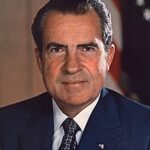President Nixon’s decision to pursue Nixon China diplomacy marked one of the 20th century’s most significant foreign policy achievements. After 23 years of mutual hostility and diplomatic isolation, Nixon chose to engage directly with Communist China. 📊 The strategic calculation was complex but brilliant in execution.
The Strategic Decision Behind Nixon China Relations
Nixon and National Security Advisor Henry Kissinger recognized China’s growing influence in global affairs. The Sino-Soviet split created an opportunity to exploit tensions between Communist powers. By 1971, secret negotiations through Pakistani intermediaries began laying groundwork for direct contact.
Breaking Decades of Diplomatic Isolation
The February 1972 visit represented a dramatic shift in American foreign policy. Nixon became the first sitting U.S. president to visit mainland China since 1949. ⚠️ The decision required careful domestic political management, as many Americans viewed Communist China as an enemy. The week-long visit included meetings with Chairman Mao Zedong and Premier Zhou Enlai, culminating in the Shanghai Communiqué that established principles for future relations.
Impact:
The impact of Nixon China diplomacy fundamentally transformed global geopolitics and created lasting benefits for American foreign policy. 🌍 The opening immediately strengthened America’s strategic position against the Soviet Union by creating a triangular balance of power.
Immediate Geopolitical Consequences
The diplomatic breakthrough forced the Soviet Union to recalculate its global strategy. Moscow could no longer assume Chinese support in Cold War confrontations. This triangular diplomacy gave the United States greater leverage in arms control negotiations and détente discussions with the Soviets.
Long-term Economic and Strategic Benefits
💰 The relationship opened pathways for future economic cooperation that would transform both nations. Trade between the countries grew from virtually zero to billions of dollars over subsequent decades. China’s eventual economic reforms and market opening created enormous opportunities for American businesses and consumers.
Historical Significance and Legacy
Historians consistently rank Nixon’s China opening among the most successful presidential foreign policy decisions. 🔥 The strategic patience and diplomatic courage required to engage a former enemy demonstrated effective leadership. This decision laid groundwork for China’s integration into the global economy and international system, fundamentally reshaping 21st-century geopolitics in ways that continue benefiting American interests today.
